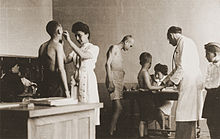War children are those born to a local parent and a parent belonging to a foreign military force. Having a child by a member of a belligerent force, throughout history and across cultures, is often considered a grave betrayal of social values. Commonly, the native parent is disowned by family, friends, and society at large. The term "war child" is most commonly used for children born during World War II and its aftermath, particularly in relation to children born to fathers in German occupying forces in northern Europe. In Norway, there were also Lebensborn children. The discrimination suffered by the local parent and child in the postwar period did not take into account widespread rapes by occupying forces, or the relationships women had to form in order to survive the war years.

The Deutsche Dienststelle (WASt) was a German government agency based in Berlin which maintained records of members of the former German Wehrmacht who were killed in action, as well as official military records of all military personnel during World War II as well as naval military records since 1871 and other war-related records. Formerly called the Wehrmachtsauskunftstelle für Kriegerverluste und Kriegsgefangene (WASt), the agency also provided information about the fate of foreign and German soldiers as well as prisoners of war in Germany. Such information is used for civil proceedings, for an official register of war graves, for historical research and as biographical and genealogical purposes.

Carl Albrecht Oberg was a German SS functionary during the Nazi era. He served as Senior SS and Police Leader (HSSPF) in occupied France, from May 1942 to November 1944, during the Second World War, Oberg came to be known as the Butcher of Paris. From May 1942, under orders from Reinhard Heydrich, Oberg ordered the execution of hundreds of hostages and the roundup and deportation of over 40,000 Jews from France to extermination camps, most infamously during the Vel' d'Hiv Roundup with the assistance of the Vichy French police.
Klaus Peter Brehmer, was a German painter, graphic artist and filmmaker. From 1971 to 1997 he was professor at the Hochschule für bildende Künste Hamburg.

The Latin phrase bellum se ipsum alet or bellum se ipsum alit, and its German rendering Der Krieg ernährt den Krieg describe the military strategy of feeding and funding armies primarily with the resources of occupied territories. It is closely associated with mass starvation in the population of these territories. The phrase, coined by Ancient Roman statesman Cato the Elder, is primarily associated with the Thirty Years' War (1618–1648).

Military brothels were set up by Nazi Germany during World War II throughout much of occupied Europe for the use of Wehrmacht and SS soldiers. These brothels were generally new creations, but in the west, they were sometimes expansions of pre-existing brothels and other buildings. Until 1942, there were around 500 military brothels of this kind in German-occupied Europe, serving travelling soldiers and those withdrawn from the front. According to records, a minimum of 34,140 European women were forced to serve as prostitutes during the German occupation of their own countries along with female prisoners of concentration camp brothels. In many cases in Eastern Europe, teenage girls and women were kidnapped on the streets of occupied cities during German military and police round ups called łapanka in Polish or rafle in French.

Das Hilfswerk für die Kinder der Landstrasse, more commonly known as Kinder der Landstrasse, was a project implemented by the Swiss foundation Pro Juventute from 1926 to 1973. The project aimed to assimilate the itinerant Yenish people in Switzerland by forcibly removing their children from their parents and placing them in orphanages or foster homes. Approximately 590 children were affected by this program.

Enfants Terribles also Nana ET Matvey is an artist duo consisting of Nana Rosenørn Holland Bastrup and Matvey Slavin. The duo was founded in Hamburg in 2012 and named after their installation Enfants Terribles which, in May 2012, was exhibited on the large paved area outside the Hamburger Kunsthalle in Hamburg. The installation Enfants Terribles was a homage to the spider sculpture Maman by Louise Bourgeois, and consisted of sixteen baby spiders around Bourgeois' existing sculpture.
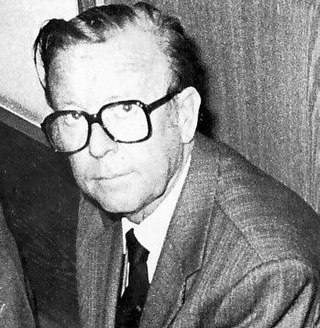
Ernst Heinrichsohn was a German lawyer and member of the SS who participated in the deportation of French Jews to Auschwitz during World War II.
Carltheo Zeitschel also Carl Theo,, was a German physician, diplomat, Nazi functionary and SS-major (1940).
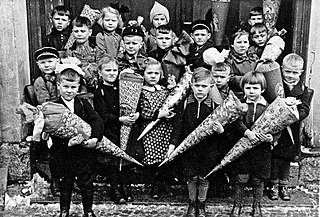
German childhood in World War II describes how the Second World War, as well as experiences related to it, directly or indirectly impacted the life of children born in that era. In Germany, these children became known as Kriegskinder, a term that came into use due to a large number of scientific and popular science publications which have appeared increasingly since the 1990s. They describe the same phenomena from different perspectives, using diverse methods and various stylistic means. The literature on this subject has not yet been able to produce a universal and binding definition. However, there is consensus that the impact of war on children can be felt decades later, often increasing with advancing age, and that at times the impact can be passed on mute to subsequent generations.
Peter Lieb is a German military historian who specializes in the history of Nazi Germany and World War II. He held positions at Institute of Contemporary History, Royal Military Academy Sandhurst and Center for Military History and Social Sciences of the Bundeswehr. Widely published in the field, Lieb specializes in the Western theatre of World War II.

The Bayerisches Armeemuseum is the Military History Museum of Bavaria. It was founded in 1879 in Munich and is located in Ingolstadt since 1972. The main collection is housed in the New Castle, the permanent exhibition about the First World War in Reduit Tilly opened in 1994 and the Armeemuseum incorporated the Bayerisches Polizeimuseum in the Turm Triva in 2012. Today, part of the former Munich Museum building is the central building of the new Bayerische Staatskanzlei.
Barbara Stambolis is a German historian and university lecturer.

Alfred Brauner was an Austrian-born French scholar, author and sociologist, who was a volunteer in the International Brigades during the Spanish Civil War and an Austrian Resistance member during Occupied France. He has devoted his life to educating refugee, displaced and maladjusted children, participating in the welcoming of Jewish child survivors of the Kristallnacht and of the Nazi concentration camps of Buchenwald and Auschwitz from 1939 to 1946. An early writer on infantile autism, he also pioneered the analysis of children's drawings in war, creating from 1937 the first collection of drawing-testimonials to offer a unique perspective of the major conflicts of the 20th century through the eyes of children.

Ulrich Pfeil is a German historian based in France.
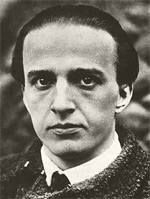
Ernst Friedrich was a German anarcho-pacifist.
Franz Brendle is a German historian and scholar teacher.

The war guilt question is the public debate that took place in Germany for the most part during the Weimar Republic, to establish Germany's share of responsibility in the causes of the First World War. Structured in several phases, and largely determined by the impact of the Treaty of Versailles and the attitude of the victorious Allies, this debate also took place in other countries involved in the conflict, such as in the French Third Republic and the United Kingdom.
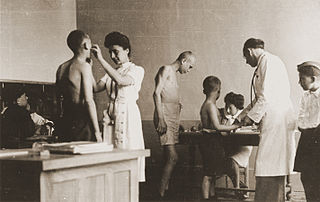
Françoise Brauner, born Fritzi Erna Riesel was an Austrian-born French pediatrician and child psychiatrist who was part of the medical contingent of International Brigades during the Spanish Civil War and was an Austrian Resistance member during Occupied France. She has devoted her medical career to educating refugee, displaced and maladjusted children, participating in the welcoming of Jewish child survivors of the Kristallnacht and of the Nazi concentration camps of Buchenwald and Auschwitz from 1939 to 1946 and working on autism in France since 1956. She also pioneered the analysis of children's drawings in war, creating from 1937 the first collection of drawing-testimonials to offer a unique perspective of the major conflicts of the 20th century through the eyes of children.

